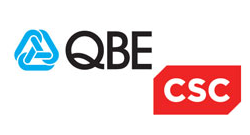Why Data Loss Prevention Must Start at the Endpoint in 2026
Organisations in 2026 are dealing with data that moves everywhere: across laptops, cloud drives, SaaS platforms, collaboration tools, and AI applications. Employees access and handle sensitive information from offices, homes, and remote locations. With this shift, the true point of risk is no longer the network perimeter. It is the endpoint.
Modern DLP must begin where data is created, accessed, and manipulated. Starting at the endpoint gives organisations the earliest possible visibility into risky behaviour and the context needed to prevent data leakage before it happens.
The Endpoint Is the First Touchpoint for Data
Every piece of sensitive information interacts with a user and their device before it reaches the network. This is where employees download reports, edit customer files, copy source code, drag documents to cloud drives, or paste text into AI tools. It is also where the majority of data loss scenarios start, such as:
- Sharing to personal email accounts
- Uploading files to unsanctioned SaaS or AI tools
- Copying sensitive information to USB storage
- Manipulating data before exfiltration
- Offline actions that traditional tools cannot see
If DLP visibility begins only at the network, organisations risk missing the crucial first half of the data journey.
Why Network DLP Alone Cannot Keep Up
Network security continues to play an important role, but it is no longer enough as a primary layer of DLP.
1. Hybrid work weakens perimeter visibility
Users often work outside the corporate network or switch between unsecured connections, making network-layer inspection inconsistent.
2. SaaS platforms bypass traditional controls
Data can move entirely within cloud apps without crossing the corporate network, leaving network DLP blind to important interactions.
3. Risky behaviour starts locally
Endpoint activity—such as taking screenshots, compressing files, or preparing data for upload—occurs before any network transfer. Detecting risk at this stage offers a valuable early-warning advantage.
Starting DLP at the endpoint ensures that risk is identified at the moment it begins, not after data has already left the device.
Behaviour Insight Is Now Essential
Modern data protection requires more than content scanning. It involves understanding how users typically behave and flagging what falls outside that norm. Endpoint-level visibility helps determine:
- What data an employee accessed
- How they moved or modified the data
- Whether the activity was typical for that user
- Which applications, accounts, or devices were involved
- Whether the activity happened online or offline
This context transforms DLP from a reactive tool into a proactive risk-management capability.
Data Security Must Follow the User Everywhere
Employees shift between corporate devices, home networks, remote workspaces, and cloud ecosystems. Data no longer sits in a controlled environment, and neither can your DLP.
Endpoint-first DLP ensures consistent protection regardless of network connection, geography, or application. This approach aligns with how modern workforces operate and how data flows in real organisations.
Shorter Time to Value with Real Visibility
Traditional DLP deployments often struggle because teams must define complex policies upfront. This delays protection and increases frustration. An endpoint-led approach reverses that process.
By observing real data activity first, organisations can confidently:
- Identify which data is most at risk
- Build policies with fewer false positives
- Prioritise the highest-impact controls
- Simplify user education and adoption
This results in faster deployment and more accurate protection.
The Right Moment to Educate Users
Employees make mistakes, but most are not malicious. The best way to encourage better behaviour is through real-time guidance at the moment of risk. Endpoint-based prompts and nudges help reinforce:
- Acceptable Use Policies
- Data handling rules
- Correct use of approved applications
This creates a more aware and responsible workforce without slowing down productivity.
Endpoint DLP: The Foundation of Modern Protection
Starting at the endpoint gives organisations a strong foundation for today’s complex data landscape. It provides:
- Early visibility into risky actions
- Context-aware behavioural insight
- Protection across cloud, SaaS, hybrid, and offline scenarios
- Consistent enforcement for remote employees
- Faster, more accurate policies
- A stronger security-aware culture
Network controls and cloud security still matter, but the endpoint is now the most critical layer of defence. The modern DLP journey must begin where data risk truly begins: with the user and their device.
Ready to strengthen your organisation’s data protection?
Speak to HANDD’s data security specialists to explore how modern, endpoint-led DLP can transform your visibility, reduce risk, and support your compliance needs.
Contact us at: info@handd.co.uk





















